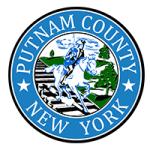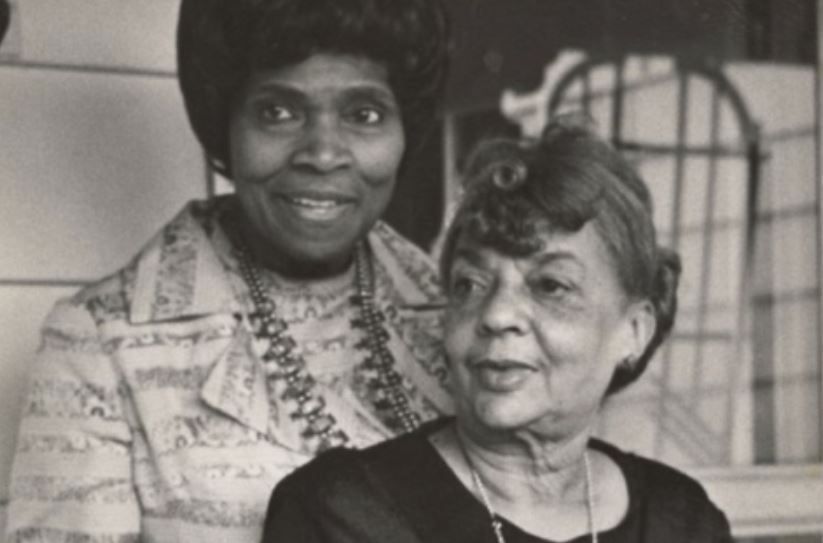Putnam’s Personal Piece of the Harlem Renaissance
Remembering Regina Anderson Andrews
By Diana Vink, P.I.L.O.T. Intern, Putnam County Historian’s Office
BREWSTER, NY (August 4,2021) — Behind the artists of the Harlem Renaissance in New York City, tucked between the pages of Langston Hughes and the melodies of Louis Armstrong, is hidden a set of unsung heroes of the era – characters who encouraged art to bloom in their own communities, and connected and celebrated the artists who made it.
One of those heroes has been an integral part of community-building in Putnam County, carrying a legacy atop her shoulders: Regina Anderson Andrews. Best known for her work as a New York librarian during the Harlem Renaissance era, Regina Anderson Andrews’ history is deeply interwoven with Putnam’s own: past her retirement, Andrews lived in a home on Long Pond Road (now Hill Street) in Mahopac. She was a dedicated member of the Mount Hope Methodist Church, of which her husband William T. Andrews, a legal assistant to the National Association for the Advancement of Colored People (NAACP) and longtime New York State assemblyman, was on the administrative board. Beyond that, Andrews also involved herself with the Human Rights Public Meeting of Putnam County. The work Andrews did for the Harlem Renaissance extended itself to Putnam County, manifesting in dedicated community service and making Andrews an important resident of the county. Her connections spanned far and wide, and she brought them to life in her new hometown, widening the perspectives of many of her community members.
Born in Chicago in 1901, the daughter of a lawyer and an artist, it comes as no surprise that Andrews was dedicated to celebrating the arts and uplifting the communities surrounding her. Regina began her career in Chicago in 1921, as a library assistant for the Chicago Public Library. In 1923, she was hired to work at the New York Public Library’s 135th Street Branch in Harlem. Throughout her time there, she was praised for her work ethic and ingenuity, focusing on community outreach with Branch Head Ernestine Rose and playing a particularly important role in the establishment and success of the North Harlem Community Forum in which speakers visited the 135th Branch to enrich the intellectual life of Harlem and its community members. Andrews would then work at several other NYPL branches during an ongoing struggle for her advancement in the system. W. E. B. Du Bois was a strong advocate for Andrews’ promotion, uncovering the colorism within the NYPL system that led Regina Andrews to work only at select branches of the NYPL, predominantly in communities of color, that would hire Black library workers. During this conflict, Andrews was eventually transferred to the 115th Street Branch, where she would then become the branch librarian in 1938.
Through her work in the NYPL system, Andrews created a large social network throughout Harlem that brought together many great minds of the time. Andrews and her roommates would frequently host their friends at their home at 580 St. Nicholas Avenue in Harlem. Their guests were often visionaries and activists, most notably, Langston Hughes. “Many people know about the writers and painters, etc. of the Harlem Renaissance but I thought it was important to tell a story of a person with a different career who was also a part of the [Renaissance] and I liked how she connected various members with each other through the library,” commented Ethelene Whitmire, writer of Andrews’ biography Harlem Renaissance Librarian.
Many of these creatives, too, were invited to Andrews’ home in Mahopac. Andrews and her husband hosted Roger Flood, Herman Moore, Jessie Fauset, and Edwin Coates at their home in 1943, including the renowned contralto Marian Anderson in 1973.
Andrews herself also participated in the arts, particularly in the realm of theater. Her involvement began with the Crisis Guild of Writers and Artists (KRIGWA) Players, who worked closely with W. E. B. Du Bois to celebrate theater focused on Black life by Black creators. After that, Andrews was one of the founders of the Harlem Experimental Theater (HET), offering opportunities for Black playwrights and actors to participate in the world of theater. In the HET, Andrews both wrote and acted in plays focused on the Black experience in America. Her work helped to develop the theater scene in Harlem, creating opportunities for the Black community to enjoy theater performances. In 1980, alongside many contributions from Andrews, playbills from the Harlem Experimental Theater were on display at the Reed Memorial Library in Carmel.
Perhaps her most notable work, however, is her experience working with civic organizations. In 1940, Andrews joined the National Urban League, dedicated to helping African Americans with their transition to living in the North during the Great Migration. Her involvement with the Urban League eventually led her to represent the League at the United States Mission to the United Nations and on the United States National Commission of the United Nations Educational, Scientific, and Cultural Organization (UNESCO). Furthermore, she became a member of the National Council of Women of the United States (NCWUS), eventually serving as their vice president and representing the Council at the United Nations, on top of managing the Washington Heights Branch of the NYPL. Through such organizations, Andrews had the opportunity to extend her reach globally, giving women and African-Americans a voice to be heard internationally. Andrews too shone a light on such issues on a state and county level: Andrews hosted a meeting of NCWUS women in Carmel in 1980, and contributed greatly to The Black New Yorkers, detailing the experiences of Black people in New York State. With her past work in mind, in 1980 Andrews loaned a collection of gifts from her time with UNESCO to the Mahopac Library, spoke about her travels at the Carmel Historical Society in 1978 and 1980, and loaned a collection of pictures of famous Black Americans to the Reed Memorial Library in 1980.
In 1948, Regina and William adopted a daughter named Regina Ann. William died in 1984 and Regina died in 1993. They are buried in Rosehill Cemetery in Putnam Valley.

Regina Andrews preparing her first corn dinner, Mahopac, NY, 1940.
Schomburg Center for Research in Black Culture, Photographs and Prints Division, NYPL, 1940.

Regina Andrews (seated) with librarian Edna Law.
Schomburg Center for Research in Black Culture, Photographs and Prints Division, NYPL, 1940 – 1970

Guests at breakfast party for Langston Hughes hosted by Regina Andrews and Ethel Ray, Harlem, NY, 1925. Ethel Ray and Langston Hughes pictured first, left corner, back row. Regina Andrews pictured first, front row.
Schomburg Center for Research in Black Culture, Photographs and Prints Division, NYPL, 1925
Many of Regina Anderson Andrews’ personal papers and photograph collection can be found at the Schomburg Center for Research in Black Culture in Harlem. The Historian’s Office would like to thank the New York Public Library and Ethelene Whitmire, author of Regina Anderson Andrews, Harlem Renaissance Librarian, (available at amazon.com and barnesandnobles.com) for providing resources and information for this article.

